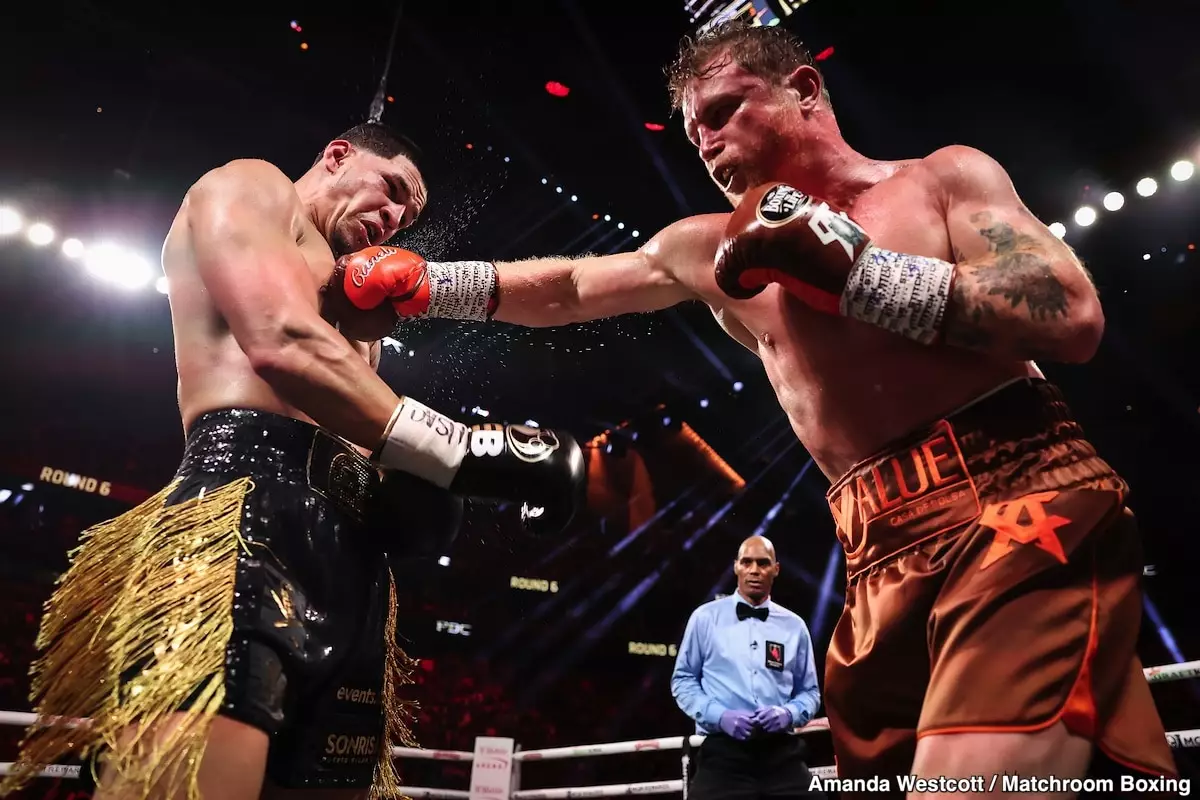The world of boxing is a tapestry of rivalries, personalities, and narratives, and nowhere is this more evident than in the relationship between Oscar De La Hoya and his former protégé, Canelo Alvarez. Their dynamic became a focal point during the recent bout between Canelo and Edgar Berlanga, a fight De La Hoya had previously dismissed. The discourse surrounding the event reveals not just the details of the fight itself, but also the deeper complexities of boxing relationships, egos, and the struggle for relevance in a rapidly evolving sport.
De La Hoya’s Predictive Misstep
In the lead-up to the fight, Oscar De La Hoya made it clear he would not be tuning in, choosing instead to attend a UFC event organized by Dana White. His decision seemed somewhat dismissive of the main event, as he publicly encouraged fans to save their money for what he anticipated would be a “lame fight.” De La Hoya’s call to arms resonated with some boxing fans who have often found themselves bored by predictable matchups and lackluster performances, but it ultimately positions him as someone out of touch with the evolving narrative within the sport.
Yet, the very fight he anticipated to be a flop turned out to be a vibrant clash that captivated the audience. Canelo Alvarez showcased a level of skill and resilience that contrasted starkly with De La Hoya’s predictions. Despite not achieving a knockout, Canelo displayed an impressive performance that suggested he is far from finished in the ring. Berlanga’s unexpected resistance and heart made the fight not just watchable, but entertaining, proving De La Hoya’s judgment to be premature at best.
Canelo’s performance against Berlanga brought his attributes to the forefront. At 34, he exhibited refinement and tactical savvy that many younger fighters often lack. Instead of relying solely on brute strength, Canelo’s ability to adapt, maneuver, and engage in intricate exchanges highlighted why he is still regarded as boxing’s premier athlete. The match revealed that Canelo can still push himself and innovate within the ring, enabling him to remain relevant—even as whispers of retirement circle around him.
Berlanga, on the other hand, emerged as a legitimate contender with tenacity and grit. His moniker “The Chosen One” has evidently not been an empty title; he stood toe-to-toe with a boxing icon and emerged not just unscathed but emboldened. His performance drew attention and respect, suggesting he has a promising future ahead. Observing Canelo and Berlanga’s dynamics—where youthfulness meets experience afforded valuable lessons for both fighters and fans.
Perhaps the most fascinating aspect of the aftermath was De La Hoya’s immediate reaction following the fight. Despite having once championed Canelo, he now appeared to relish an opportunity to undermine him. His social media posts, laden with emojis that symbolized boredom, painted him as a jilted ex-partner rather than the gracious promoter he once was.
His remarks about Canelo throwing “more than three punches a round” belied a deeper insecurity and bitterness, suggesting not just a rivalry within the sport, but also hints of jealousy over Canelo’s continued prominence as a sports icon. The inference that Canelo’s efforts fell short reveals more about De La Hoya’s emotional investment than any objective analysis of the bout itself. This interaction raises questions about the potential for reconciliation between the two, given their once strong mentor-mentee relationship.
As the dust settles from the Canelo-Berlanga fight, the boxing community now turns its attention to Canelo’s future. Options abound, ranging from potential rematches to bouts against elite competitors like Dmitry Bivol or Terence Crawford. Each possibility carries higher stakes and the prospect of exhilarating matchups, thus keeping Canelo firmly in the limelight while simultaneously adding layers to the ongoing drama.
In the end, De La Hoya’s critical lens falls short, overshadowed by the vibrancy of the bout itself. As Canelo continues to solidify his legacy, De La Hoya must reconsider his stance—not just on Canelo but on the sport as a whole. The narrative that unfolds post-fight may prove just as compelling as the fight itself. Thus, the real question remains: Will Oscar be able to navigate this new landscape and adapt, or will he remain anchored in his bitterness? The answer may well define both their futures in boxing.

